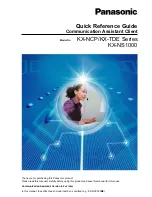
Initiating and exiting Hibernation
The system is set at the factory to initiate Hibernation after 30 minutes of inactivity when running on
battery power or when the battery reaches a critical battery level.
NOTE:
The system will not initiate Hibernation when running on external power.
NOTE:
To reduce the risk of information loss, periodically save your work.
Power settings and timeouts can be changed using Power Options in Windows Control Panel.
To initiate Hibernation:
1.
Select
Start
>
Turn Off Computer
.
2.
Hold down the
shift
key and select
Hibernate
.
– or –
▲
If the computer is on, briefly slide the power switch.
To exit Hibernation:
▲
Briefly slide the power switch.
When the computer exits Hibernation, the power light turns on and your work returns to the screen where
you stopped working.
NOTE:
If you have set a password to be required when the computer exits Hibernation, you must enter
your Windows password before your work will return to the screen.
Using power schemes
A power scheme is a collection of system settings that manages how the computer uses power. Power
schemes can help you conserve power and maximize computer performance.
The following power schemes are available:
●
Portable/Laptop (recommended)
●
Home/Office Desk
●
Presentation
●
Always On
●
Minimal Power Management
●
Max Battery
You can change the settings of these power schemes through Power Options.
Viewing the current scheme
▲
Click the
Power Meter
icon in the notification area, at the far right of the taskbar.
– or –
Select
Start
>
Control Panel
>
Performance and Maintenance
>
Power Options
.
16
Chapter 3 Power management
Summary of Contents for Mini 210-1008TU
Page 1: ...Mini User Guide ...
Page 4: ...iv Safety warning notice ...
Page 50: ...Volume can also be adjusted within some programs 42 Chapter 5 Multimedia ...
Page 94: ......
















































